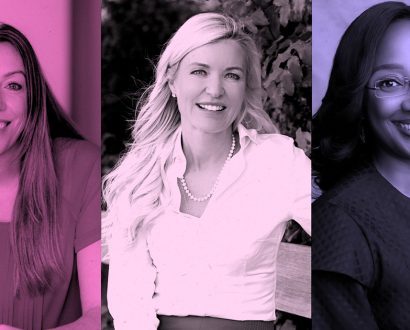From supply chain disruption to rising insurance costs and employee mental health concerns, the concept of business as usual (BAU) is untenable in a world dramatically altered by climate change impact.
The scientific and physical realities of climate change – and the things we need to do to prevent it from worsening to catastrophic extremes – pose an unavoidable challenge for every CEO. You might not have chosen to run an organization in the middle of a climate emergency, but that nevertheless is our shared reality. And our shared responsibility.
[The climate crisis is] an opportunity for business leaders to craft their individual and organizational identities around our shared, inescapable purpose.
As David Attenborough put it: “If working apart we are a force powerful enough to destabilize our planet, surely working together we are powerful enough to save it.”
For CEOs, this means meeting all the usual demands of business and institutional leadership while also figuring out your part in tackling the climate crisis. This is no doubt a big challenge. But importantly, it is also an opportunity for business leaders to craft their individual and organizational identities around our shared, inescapable purpose.
Come together
I recently had the chance to discuss this immense challenge with a group of business leaders from the Sydney chapter of the Entrepreneurs’ Organization, a global not-for-profit organization.
The very fact that a group of self-identified entrepreneurs came to Greenpeace’s new regional headquarters – known as Rainbow Warrior House – and sat side-by-side in our campaign warehouse with activists who recently scaled a 125-meter crane in Perth to protest gas company Woodside, is a sign of the post-BAU times that we are in.

While the necessary innovation does, to some extent, point to a need for technical fixes and new products, what every CEO also needs to think about is the accompanying challenge to identity and purpose.
For both organizations, an event like this was a bit of an experiment, involving trust in opening up, without fear of judgment. The result was some significant emotion in the room, with many questions addressing the scale of the climate crisis and the moral and practical imperative of where to focus effort.
Some at the gathering were understandably daunted by the scale and speed of action required to keep global temperature rise to less than 1.5 degrees Celsius – agreed as the safe upper limit by world leaders at the UN Climate Conference in Paris, 2015. The science dictates that this means a rapid transition away from coal, oil and gas to renewable energy and a ban on new fossil fuel projects.
Become the solution
While the necessary innovation does, to some extent, point to a need for technical fixes and new products, what every CEO also needs to think about is the accompanying challenge to identity and purpose.
Regardless of sector, any organization that is genuinely part of the solution is going to be in a better and more resilient place as both climate change impact and climate action start to gather speed and intensity.
Pretty much every single business can look into maximizing energy efficiency and choose to source their electricity from renewable sources. If you are in the creative industry, you can join the growing group of companies pledging not to work with clients that promote the growth of fossil fuels.
Any organization that is genuinely part of the solution is going to be in a better and more resilient place.
If your work involves seeking out sponsorship for your sporting club, arts event or really anything else, you have the power to reject fossil fuel sponsorship deals, so that climate-wrecking companies cannot buy their way out of a bad reputation. If your organization is a member of a peak body, make sure it’s not lobbying for weaker climate legislation.
Achieving organizational momentum to be part of the solution is where identity matters. Social scientists have identified that willingness to take climate action is linked to our sense of identity. A key driver of climate action at both an individual and political level is our participation in social groups, and the norms, convictions and preferences held by these groups.
The multiplier effect
A business that aligns identity and purpose with the greatest crisis facing our planet will not only deliver real world emission reductions but can also be expected to have a multiplier effect on the attitudes of those involved.
Unfortunately, despite our best efforts to urgently scale up climate solutions, there will be difficult times ahead. Beyond the interruptions to supply chains, resources and infrastructure, climate impact takes a very real toll on the personal health and security of people and communities.

Change is no doubt challenging, complicated and costly – but there are also immense opportunities for early movers.
And at such times, being a climate leader will require CEOs to model resilience and care for those around them. From flexible work arrangements to extra resourcing for crisis support, this will look different in every organization; but the duty of care that leaders have remains unchanged.
As climate change fundamentally reshapes our world, the corporate world will inevitably need to adapt to the demands of our post-BAU era. Change is no doubt challenging, complicated and costly – but there are also immense opportunities for early movers.
The ‘Topping Report’ commissioned by Cambridge University sums this up best:
“Those who claim leadership but act with timidity or equanimity will be labeled hypocrites, suffer reputational damage, and end up aligning with agreed norms in a small number of years anyway. Those who grasp the nettle and act consistently with their leadership message will reap the reputational benefit which will last for years to come.”







